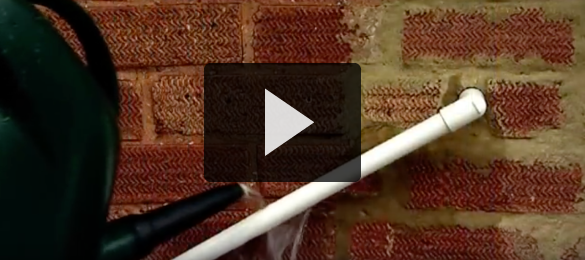Frozen condensate pipes
Page updated on: 10/01/2023
If you’ve had a new gas boiler fitted in the last few years, the chances are that it is a high efficiency boiler. This means that more energy is extracted from the gas supply, with less carbon emissions and lower fuel bills. High-efficiency boilers have been installed as part of the Carmarthenshire Homes Standard programme.
High efficiency boilers produce water vapour as part of the combustion process, which, when cooled, produces water condensate. You’ll be able to tell if you have a high efficiency boiler if you can see a plastic pipe amongst the metal pipes coming from your boiler. This is the condensate pipe.
In most circumstances, the condensate pipe will run from your boiler to an internal drain, but sometimes – where this was not possible during the installation process – the condensate pipe will be taken through the wall to an external drain. The pipe should usually be at ground level so that it can be accessed easily when necessary.
During extreme cold these pipes can sometimes freeze which may stop your boiler from working properly. If this happens, you may see an error code on your boiler, or you will be able to hear gurgling water noises. Sometimes, a ‘no flame’ symbol will be displayed.
What do I do next?
If you think your condensate pipe may have frozen – especially if it runs outside - there is a simple way to thaw it and get your boiler working again. Only attempt the following if the pipe is at ground level and can be reached easily. Do not climb a ladder or use anything to reach any pipes that have been installed above ground level. If you do not feel you are capable, please call us (if you are a council tenant) or a plumber (if you are a private tenant or homeowner).
- Try to locate the part of the pipe which has frozen. It’s most likely to be the open end of the pipe, at a bend or elbow, or where there is a dip in the pipe where condensate can collect.
- Use a kettle or microwave to heat some water so that it is hot, but not boiling. Then pour it over the outside of the frozen section of the pipe using a suitable container, such as a watering can. It could take up to 30 minutes depending on how much ice has formed.
- Another way to thaw the ice is to hold a hot water bottle, or even a heat wrap (the kind used to relieve muscle pain) against the frozen pipe.
- Once the condensate pipe has fully thawed, you will need to reset the boiler using the reset switch. You should then hear the boiler firing up as normal.
Housing
Our tenants
- Swap your home
- Pest Control
- Tenants Contents Insurance
- Get Involved
- Assign your tenancy to someone else
- Joint contract-holder
- Death and Succession
- Ending your occupation contract (council tenancy)
- Garden Maintenance
- General Garden Maintenance
- Tree Work
- Meet your area housing team
- Antisocial behaviour
- Fitness for Human Habitation
- Recharge repairs Policy
Pay your rent
Request a repair
Housing advice and support
Heating your home
Adapting your home
Renting Homes (Wales) Act 2016
- Our Tenants - Contract-holder
- Private Landlords
- Terminology
- Private Tenants
- Have you received your converted occupation contract?
Find a home to rent
- New homes
- Help with your bond
- Your rights
- Local lettings policy
- Valid Identification documents
- Completed Housing Developments
My Nearest - Housing
More from Housing


